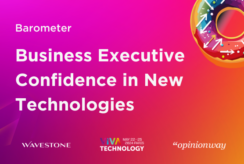Overview
In 2020, 50% of organisations moved their workloads to the cloud. Now positioned in a cloud environment, ¾ of companies plan to increase their expenditure on the cloud for reasons such as having to adopt to hybrid working, and the expectation from employees and customers for a level of automated services
Traditionally, the model of managing consumptions through the purchasing of physical infrastructure was straightforward as you could only use what you physically owned. Operating in the public cloud requires continual management of consumption, capacity, performance, and of course – cost. A variety of specific skillsets and operational functions are now needed to keep costs under control.
Although many benefits can be realised from migrating to the cloud, financial threats need to be addressed and opportunities should be exploited. Greater collaboration is now needed between business, financial and technical teams to optimise costs. Cloud expenditure is now an issue for all three teams, and all require access to cost data to help optimise and ultimately drive decisions.
What are the benefits of FinOps?
Financial Operations (FinOps) creates a cross-functional and transparent cloud organisation that aids your company in aligning your business objectives to your cloud infrastructure and provides the opportunity to highlight the importance of savvy cloud investment. Successfully managing cloud costs requires a role and culture combining finance and operations. With the organisations we have worked with, we recognise one of the keys to a successful FinOps organisation is the establishment of a transversal ‘Centre of Excellence’. This defines pricing models, promotes communication and the sharing of best practices, organises governance, produces reports, defines the roles and responsibilities, and implements tools.
Identify FinOps roles and processes to drive optimisations
Identifying a ‘FinOps Manager’ role helps drive your optimisation and operations. The FinOps Manager is a hybrid role spanning a financial manager and a cloud architect that is responsible for the implementation, smooth running, and governance of the activity. For FinOps to be effective, the FinOps Community, led by the FinOps Manager needs access to the consumption data and associated costs. At an application level, it is the job of the IT teams to monitor consumption and cost, detect unusual increases, execute optimisations, design with FinOps in mind, and collaborate and contribute to the wider FinOps community.
The fine granularity and accessibility of cloud cost information is transforming the way infrastructure costs are managed. Historically, cost management was the business of a few and is now the business of all. Reporting will be the fuel for the FinOps motivation of the teams, and therefore everyone must have access to the data.
With a formalised structure and strategy in place, you can focus on the deployment of FinOps best practices. These can be viewed in a 3-stage lifecycle:
- Knowledge: Cloud consumption data needs to be accessible and understandable. The data is commonly presented through dashboards. Increased visibility on top consuming resources/application, actuals vs budgets, forecasts, etc. aids informed decision making.
- Optimise: This is the main objective of FinOps: to exploit optimisation levers to reduce Cloud costs. This can take several forms, depending on the maturity and scope of the type of services consumed. Whether this is right-sizing, auto turn-off or other similar activities.
- Industrialise: FinOps should not be a one off but instead embedded into the BAU Cloud process, and recurring practices need to be defined. Acculturate the teams and automate as much as possible.
Key Takeaways
Through the creation of the continuous cycle of financial, business, and architectural processes, FinOps can optimise cloud value. The investment in FinOps can sometimes be difficult to quantify as the costs are dispersed across the organisation. Immediate, large savings occur in the more immature environments and then over time flatten out because they are processed over time in the form of continuous improvement. In the long run, from a “FinOps by design” perspective, the benefits of FinOps will no longer be quantifiable in the form of cost reduction, but rather in the more abstract form of the level of adoption of best practices.
From our experience in delivering FinOps engagements, we have observed that all clients have achieved their ROI in less than 1 year. Across your cloud bill, it is reasonable to expect an optimisation of around 10%. Our experience shows that deploying effective and mature FinOps practises can reduce cloud expenditure by 20-30% in the long run.




